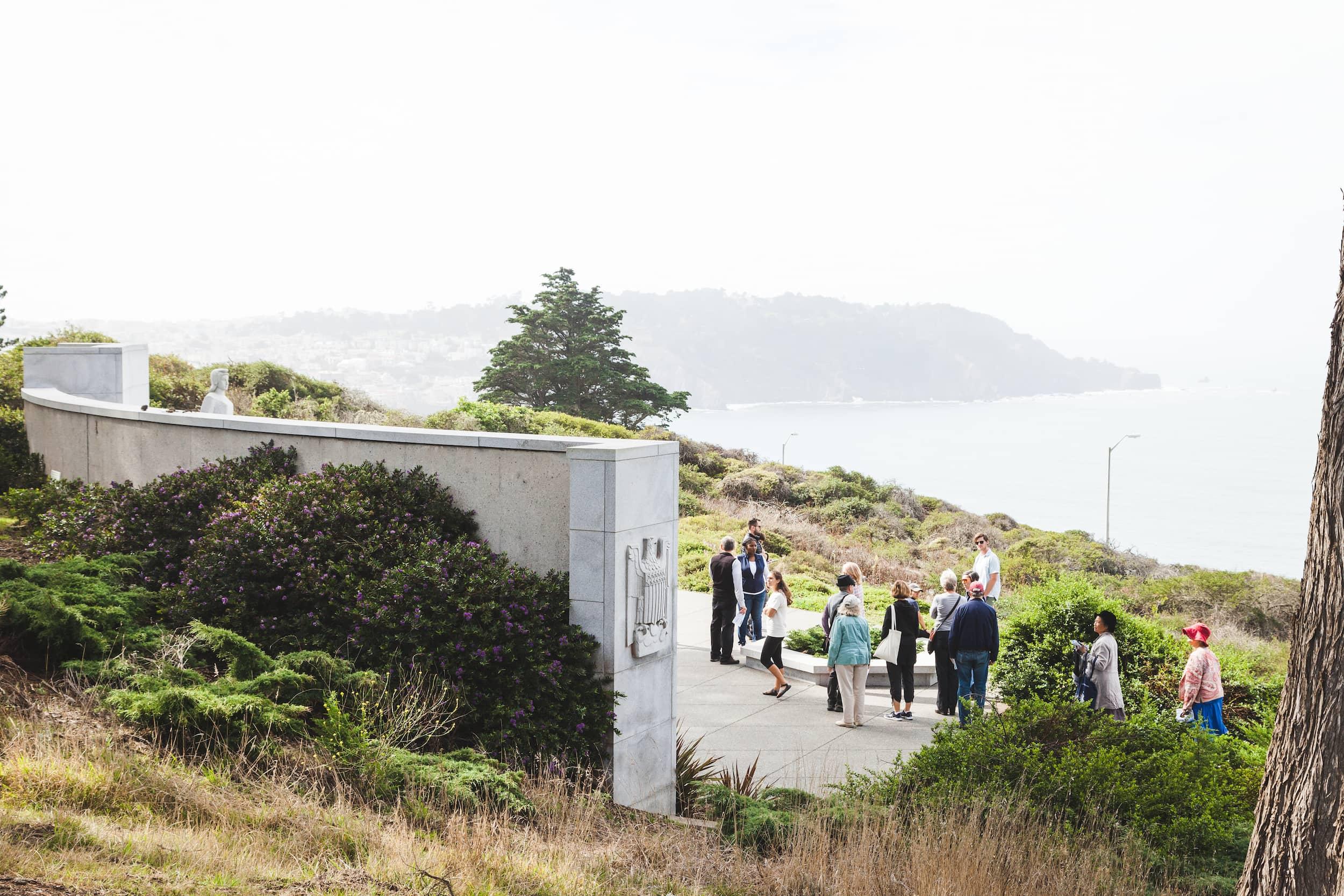Nov 3, 2021
Discover Eight Presidio Memorials and Monuments
Discover these eight memorials and monuments that provide a glimpse into Presidio history.Starting in 1776, the Presidio of San Francisco served as a military outpost under three different flags – Spain, Mexico, and the United States. In 1994, it became a national park site as part of the Golden Gate National Recreation Area. But you can still experience its military history through the Montgomery Street red-brick barracks, the batteries along the Presidio’s coastline, and the historic Fort Point at the entrance to the Golden Gate. The Presidio is also home to a multitude of memorials and monuments. Here are eight you can walk or bike to in the park.
1. World War II West Coast Memorial
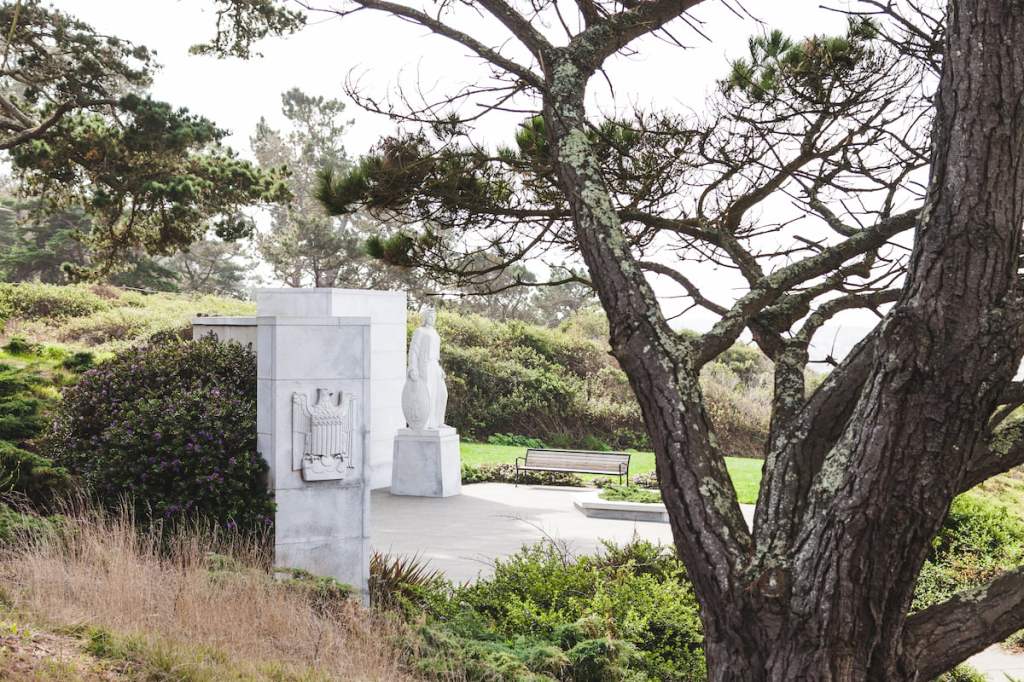
On a high ridge overlooking the Pacific Ocean is the World War II West Coast Memorial. Dedicated on November 29, 1960, the American Battle Monuments Commission erected this memorial to commemorate 413 members of the Army, Army Air Forces, Navy, Coast Guard, and Marines who lost their lives in the Pacific Ocean off the shores of North and South America during World War II.
2. Korean War Memorial
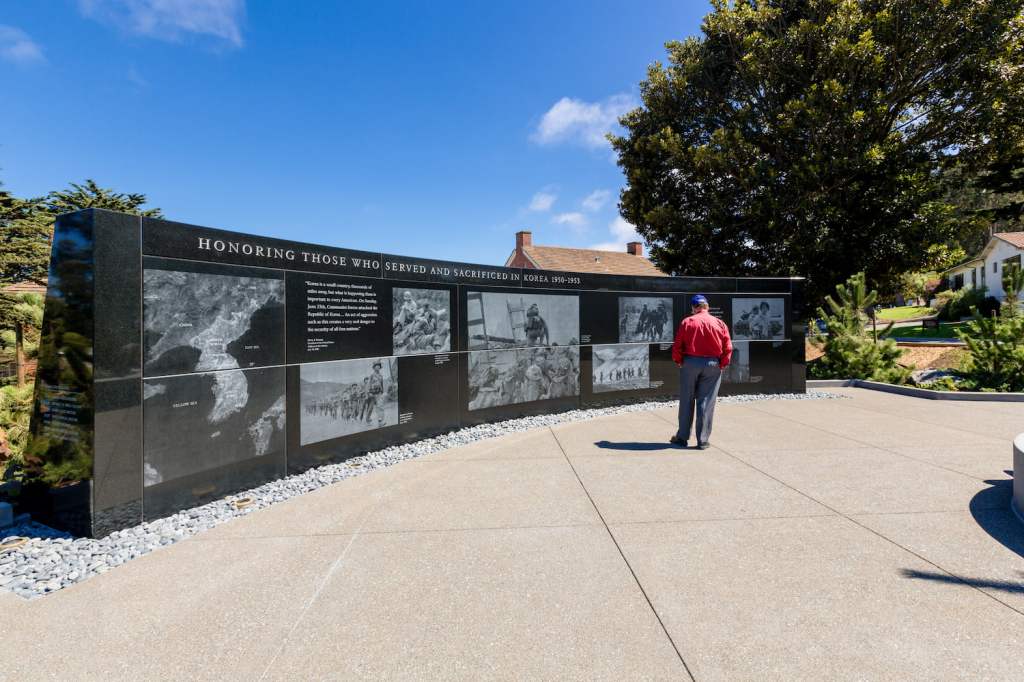
Located across from San Francisco National Cemetery, the Korean War Memorial is the newest memorial in the Presidio, dedicated August 1, 2016. It commemorates those who served during the three-year Korean War (June 25, 1950 to July 27, 1953). Nearly 1.8 million U.S. servicemembers served in the Korean theater, and over 36,500 lost their lives. The Korean War Memorial Foundation raised the money to plan and construct the memorial, which faces west toward the Pacific Ocean and the Republic of Korea.
3. Monument to the Unknown Soldier Dead
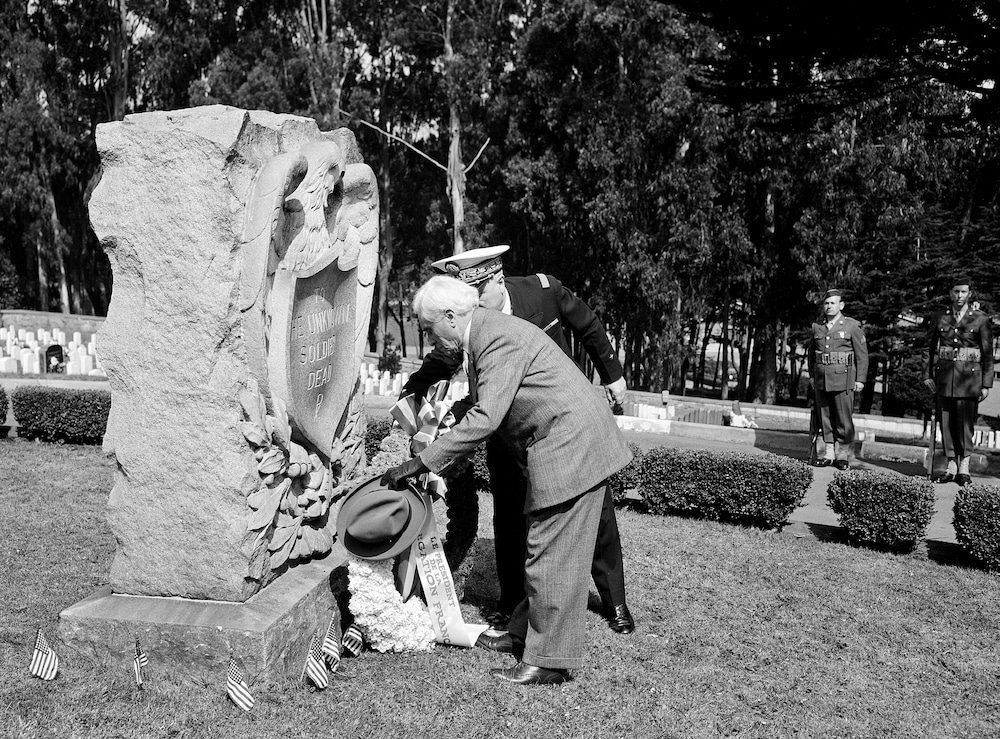
San Francisco National Cemetery is home to the Monument to the Unknown Soldier Dead, dedicated in 1934. The U.S. Army gathered the remains of about 517 unknown soldiers from throughout the cemetery, reinterred them together, and marked the location with a granite block with a relief sculpture of an eagle holding a shield with the inscription, “To the Unknown Dead.” For many decades, the Army held an annual ceremony at the monument on Armistice Day, later re-named Veterans Day, a federal holiday that occurs on November 11 each year in honor the end of World War I.
4. D-Day Memorial
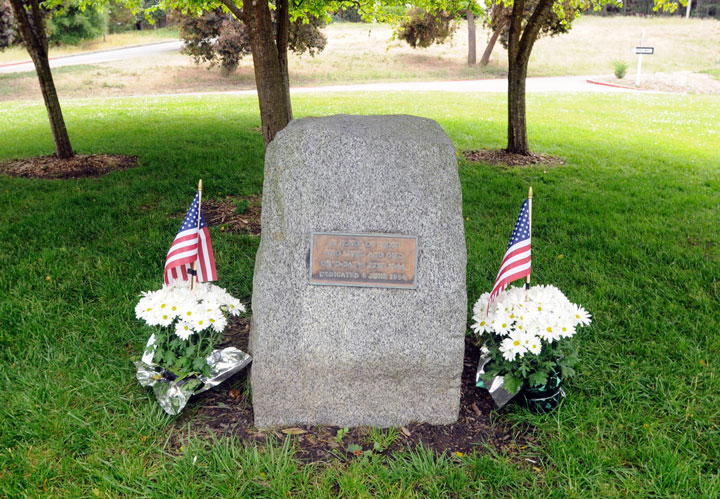
In front of the Golden Gate Club is a memorial plaque stating, “In honor of those who lived and died on D-Day 6 June 1944.” This memorial was installed in 1984 on the fortieth anniversary of D-Day – the massive Allied assault of Normandy during World War II, which began the liberation of France from German control. Over 73,000 U.S. troops took part in the landing. The United States suffered about 6,600 casualties.
5. U.S. Army Chaplains Memorial
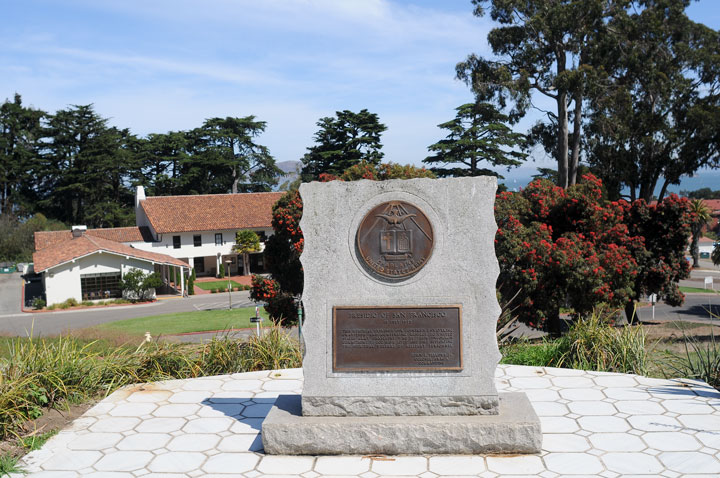
The U.S. Army Chaplains Memorial is in front of the Presidio Chapel. Partially funded by the community, the Army dedicated this memorial on July 29, 1973, on the 198th anniversary of the creation of the Army Chaplaincy when the Continental Congress authorized one chaplain for each regiment of the Continental Army. About 1,300 active-duty Army chaplains and 1,200 in the reserve components serve today, representing five major faith groups (Catholic, Protestant, Jewish, Muslim, and Buddhist) and over 120 denominations.
6. Vietnam Veterans Memorial
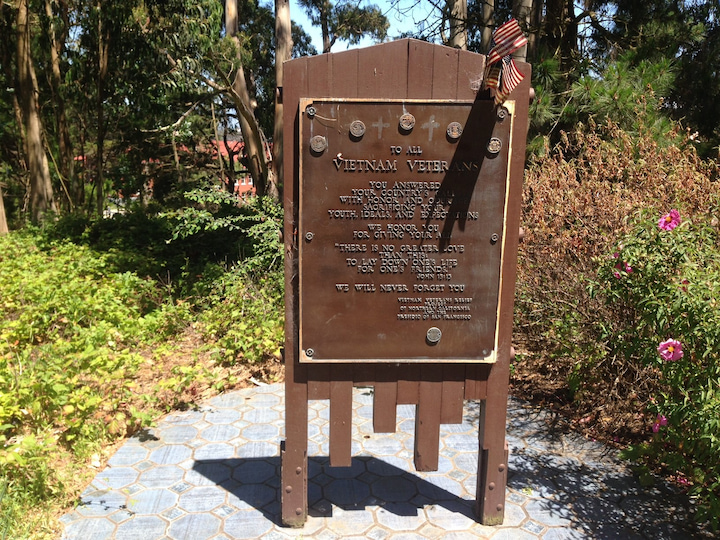
To the east of the Presidio Chapel is the Vietnam Veterans Memorial, dedicated to members of the U.S. armed forces who served in that war. Consisting of a bronze plaque mounted on redwood, the inscription reads: “You answered your country’s call with honor and courage sacrificing your youth, ideals, and expectations. We honor you for giving your all.” Dedicated on May 25, 1986 and funded by the Vietnam Veterans Relief Project of Northern California and the Presidio of San Francisco community, it was the first memorial of its kind placed in an active military post.
7. The Centennial and Bicentennial Trees
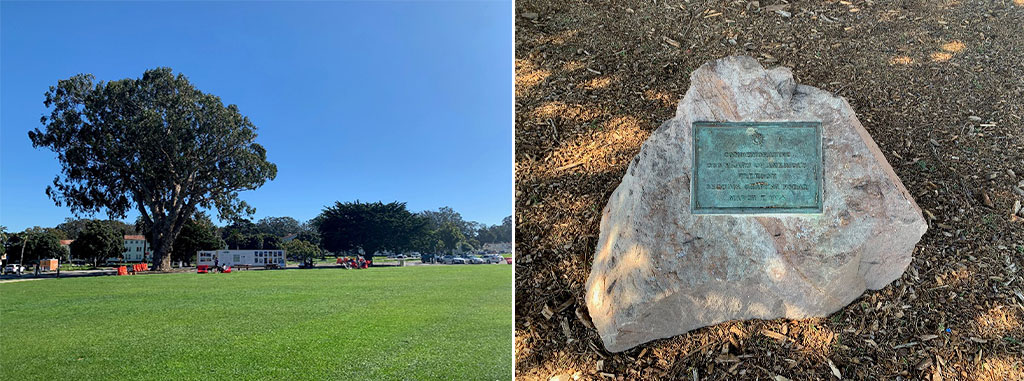
The Declaration of Independence is commemorated near the Main Parade Lawn by two living monuments. One tree celebrates the country’s centennial on July 4, 1876. The Presidio’s post trader at the time, Angelo Beretta, originally planted three eucalyptus trees – one for each of his children – in front of his store at the Main Post in 1876. The Army removed two of them as it expanded the Main Parade Ground, but the third tree was preserved by a special act of Congress and became known as the Centennial Tree. A few yards away, on March 7, 1976, another tree – a Monterey cypress – was planted as the Bicentennial Tree with a commemorative bronze plaque from the Daughters of the American Revolution.
8. First California Regiment Camp Site
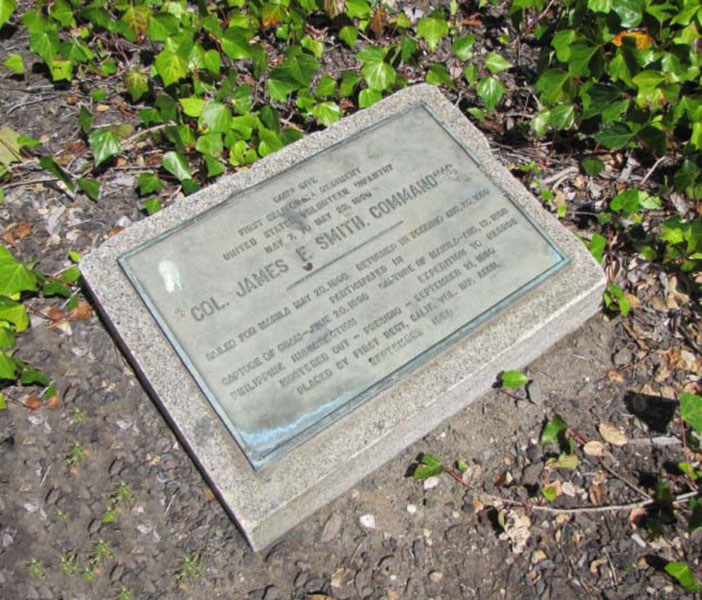
The Presidio of San Francisco played a major role in the assembly of troops for the Spanish-American War. This is remembered in a plaque marking the location in May 1898 of the camp of the First California Regiment of U.S. Volunteer Infantry. Located about 200 feet from the Lombard Gate, the plaque was presented to the Presidio in 1958 by veterans of that unit, many of them then in their eighties.
